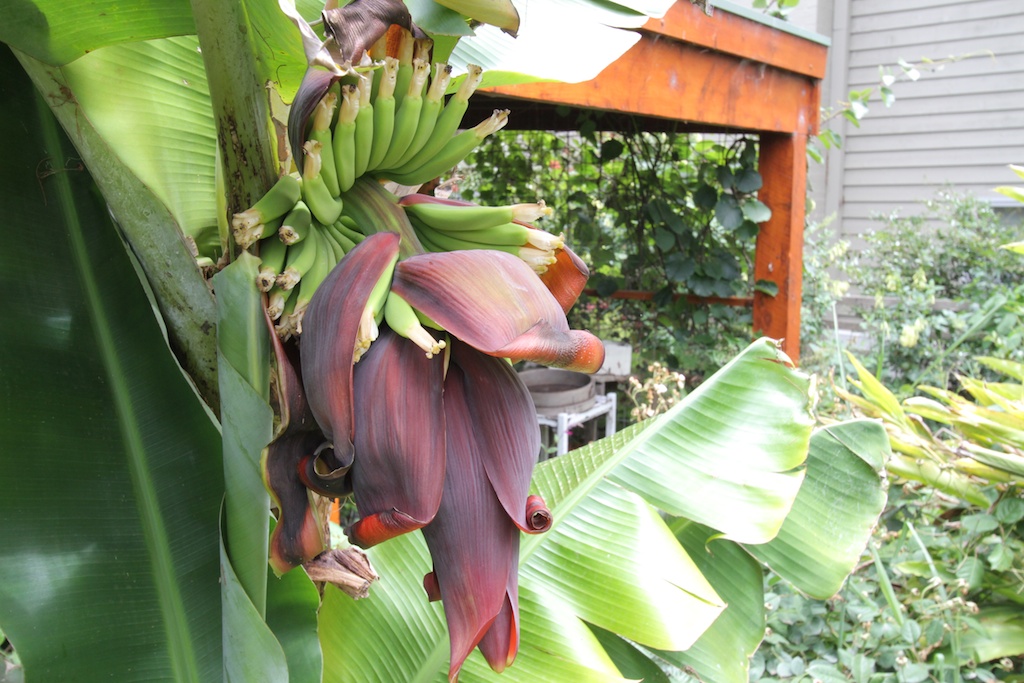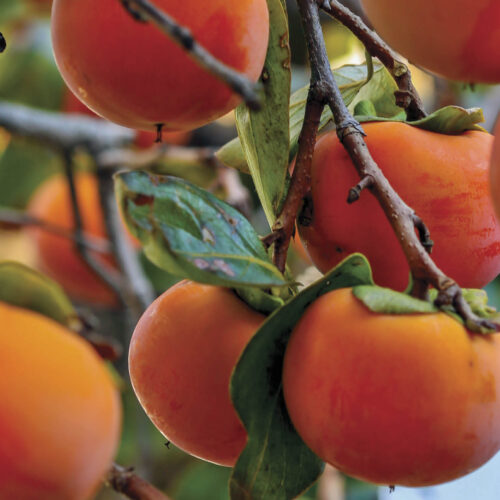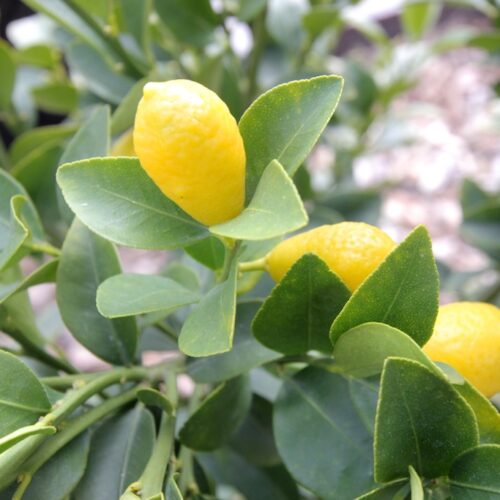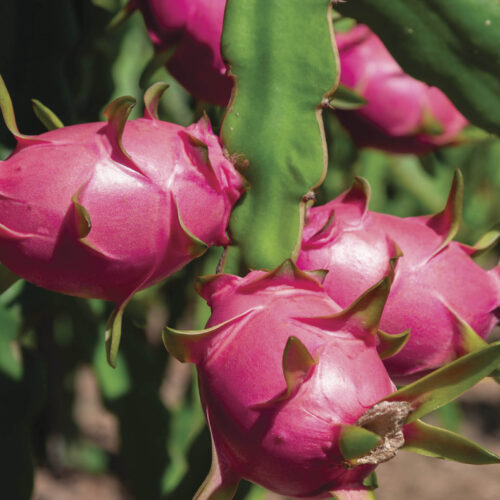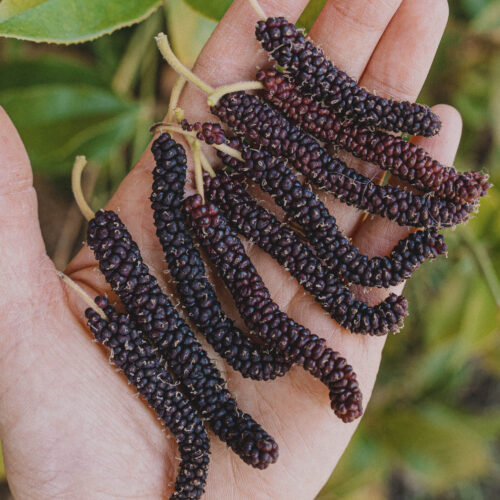Bountiful bananas
2016-01-19T03:49:40+11:00
Have you thought of growing bananas in your cool climate garden? asks PENNY WOODWARD.
I was very excited when my banana (a Dwarf Cavendish) produced a flower a couple of months ago, and then tiny bananas started to grow. I was probably too excited as I invited all my neighbours to come and see it. I wasn’t sure if bananas would grow and fruit here, we are warm temperate and don’t usually get frosts because we are pretty close to the sea. Still it gets pretty cold in winter and we can get some ferocious and salty winds. But I really wanted to see if they would grow for me. I chose a position that faces north so it gets lots of sun, is sheltered by the house from the worst of the cold winds and is close to our big pond. The nearby pond creates a slightly more moist microclimate as well as ameliorating temperatures a bit. I carefully prepared the soil adding lots of organic matter: compost and well-rotted sheep manure.
Banana plants can grow to 8m but my dwarf Cavendish is only 2m. This cultivar is one of the main commercial types and is relatively disease resistant and the fruit easy to harvest. If you live in a banana growing region you can only grow bananas, even in a home garden, if you have a permit. This rule is in place in an attempt to stop the spread of serious diseases that decimate commercial crops. Bananas are monocotyledons, which means they have a single seed leaf and are related to grasses and palms. Each banana stem grows with thick clasping leaves that can be a couple of metres long and 50 cm wide. Each of these stems produces only one flowering stem with a flower from which develop the ‘hands’ of bananas. Although the flowers are full of nectar, edible forms don’t need to be pollinated (they are parthenocarpic). The small green fruit grow and thicken over several months (the cooler the weather the longer they take) and the whole fruiting stem may need to be propped up so that its weight won’t cause the stem to fall over. Harvest the whole hand once the bananas are a good size but still green and allow them to ripen inside.
More stems (suckers) grow around the base of the plant and to stop them becoming over crowded and drawing too many nutrients from the developing fruit its important to remove extra stems. This is better known as de-suckering. I use a sharp spade to cut down between the main stem and the sucker. The suckers can be replanted elsewhere, even into pots if it’s a dwarf cultivar, or thrown into the compost. Once a stem has produced a flower and fruit, the whole stem will die. So always keep two suckers growing, one to replace the spent stem, and the other as a spare just in case.
My banana plant has never looked pretty, as despite the wind protection the leaves still get shredded in strong northerlies, but it has given me great joy to grow something I have never grown before. Watching the amazing flower and then the fruit develop gave me so much pleasure that as well as dragging the neighbours in to see it, I also gave them plants and now several of them are growing bananas too. They are from suckers that I removed and potted up and then passed them on. Its the epitomy of what gardening should be all about: discovering new things, growing your own food, sharing it with friends and neighbours and having fun while you’re doing it.

